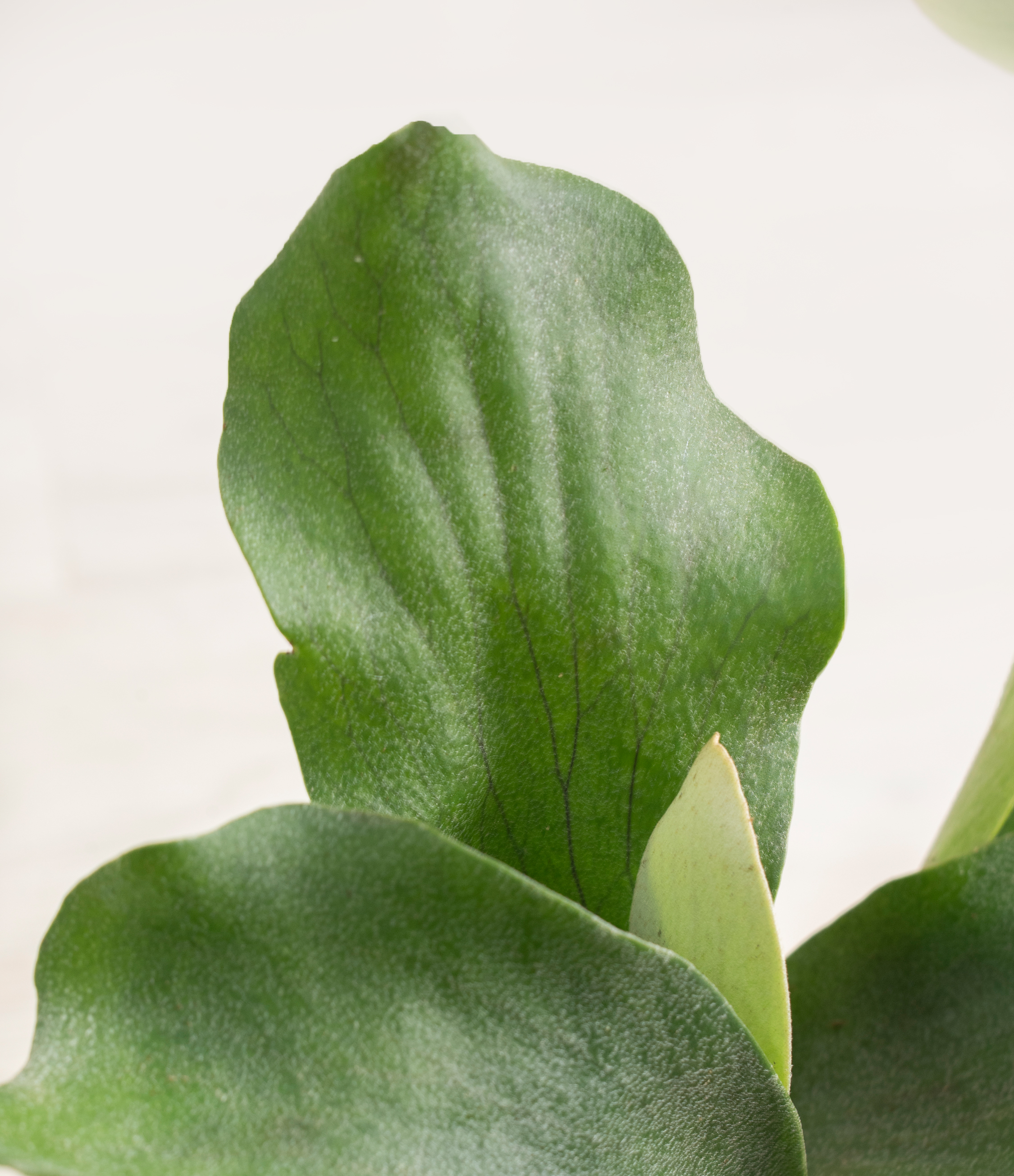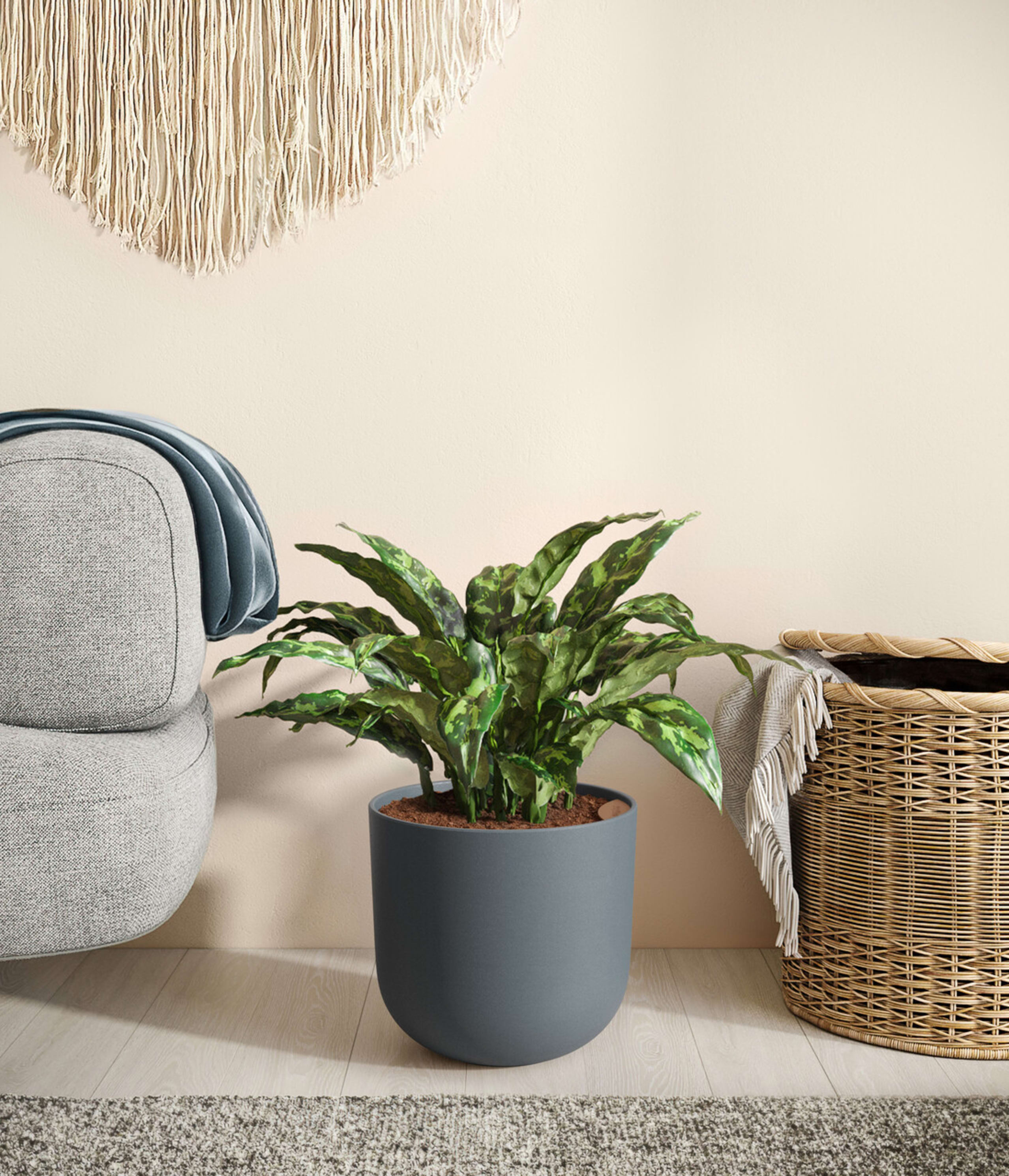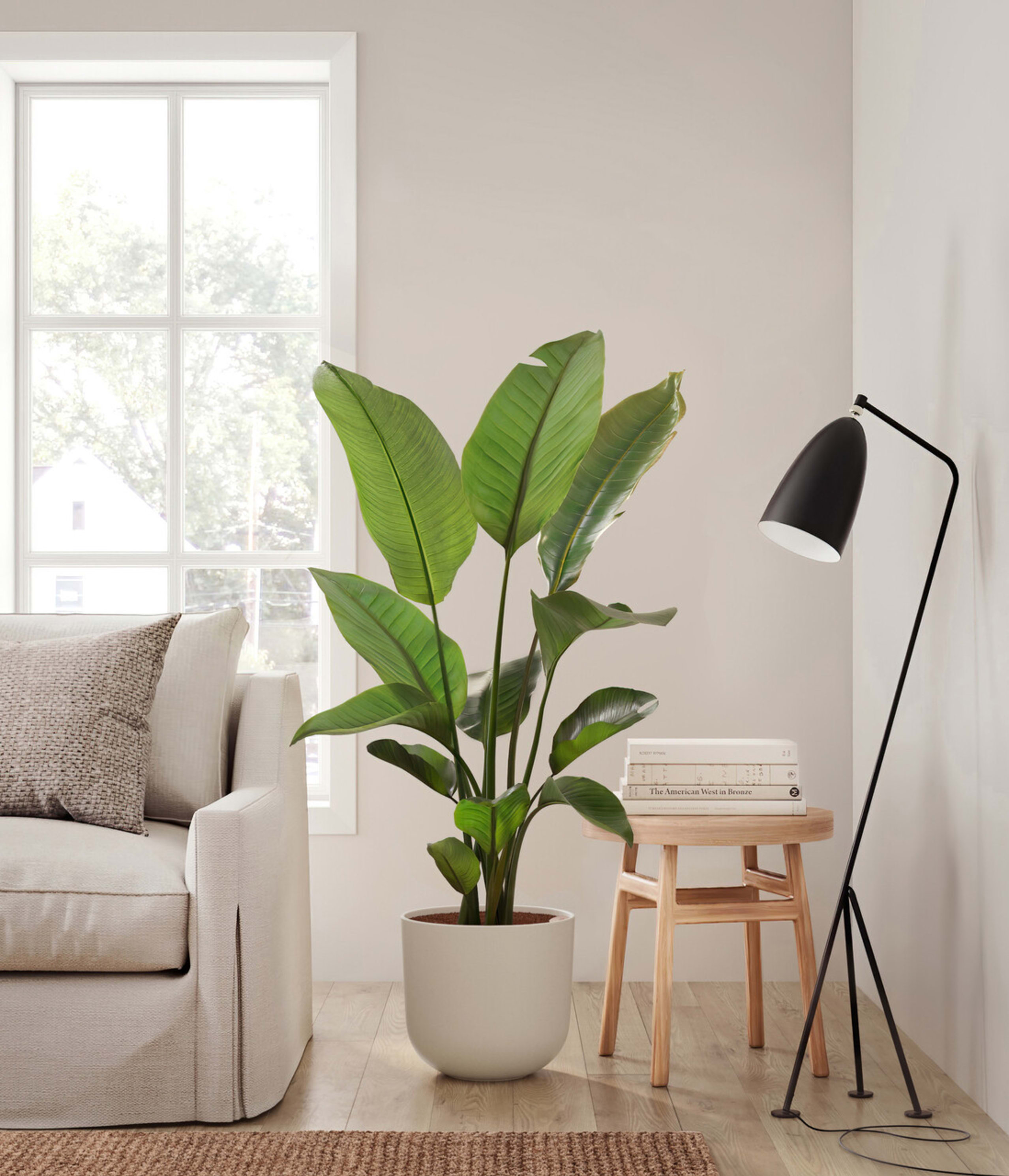About Staghorn fern
Native to Australia, there are dozens of species of Staghorn Ferns. You'll find this plant potted in soil, but it can also be hung in a hanging basket or mounted to a board and hung on the wall.
The Staghorn Fern is epiphytic, growing on trees or other plants in native environments. This plant has two types of leaves or fronds, antler and shield fronds. The antler fronds are large and shoot out of the center, and the shield fronds protect the base of the plant, growing on top of each other, creating the “shield” look.
Other common names
- Elkhorn Fern
- Crown Staghorn
- Disc Stag’s Horn Fern
- Platycerium Bifurcatum
How Often Should I Water My Staghorn fern?
With easyplant, watering your Staghorn Fern is simple. Make sure to check the easyplant reservoir once a month and fill it when empty, and you're all set!
If you don't have an easyplant to make watering your plant hassle-free, manually water once a week in the spring and summer or if you live in warmer climates. In the winter, slow the watering to every two to three weeks. If mounted, remove it from the wall and soak the base in a sink of water for 10 to 20 minutes. Allow the base to dry fully in between watering.
If your Staghorn Fern is potted in a pot, water thoroughly and evenly until the roots have been saturated. Be sure it properly drains, then remove any excess water so the plant isn't sitting in it. When you water, focus on the base and do not water the fronds, or it can increase the risk of leaf disease.
Staghorn fern Light Needs
Staghorn Fern grows best in a space with bright indirect light, where the sun rays are diffused, and can also adapt to spaces with medium to low light. Avoid placing it in spaces without natural light or with direct sunlight.
The key to the Staghorn flourishing is to imitate its natural habitat. This plant lives in sub-tropical climates on the bark of trees, so it's accustomed to the canopy's shade. The Staghorn Fern enjoys consistent but shaded light. It can also handle bright, indirect light if provided extra watering. Avoid putting this plant in harsh direct light as the fronds could easily burn.
The ideal place to put your Staghorn Fern is mounted on a piece of wood, hung along a wall touched by a stream of light from a window. Be sure the mount is not too close to a window to avoid the leaves burning. You can also place a sheer curtain on the window to help diffuse the light and avoid harsh rays affecting your plant.
Staghorn fern Plant Care
Staghorn ferns are fascinating and unique plants that are known for their antler-like growth habit. These epiphytic plants can be grown indoors or outdoors and prefer bright, indirect light and high humidity. Staghorn Ferns should be mounted as they move toward maturity. If you choose to mount your plant, you'll use various materials for the base of the plant, including compost, moss, and peat. As the plant's fronds grow, it may need remounting on a large slab or piece of wood.
It's important to be mindful of watering Staghorn ferns, as overwatering can lead to root rot. Let the top inch of soil dry out before watering, and consider using a humidifier to increase humidity levels instead of misting the leaves, which can cause leaf disease.
With proper care, Staghorn ferns can make a beautiful addition to your space for years to come. To help them grow optimally and evenly, occasionally dust their leaves and rotate the pot by a ¼ turn each month.
Staghorn fern growth
The Staghorn Fern can grow to massive proportions in its natural environment, sprouting impressively from a tree. The shield fronds stay relatively small, protecting the base of the plant. The arching fronds can grow up to 18 inches long. Each frond branches into several segments, a few times along its length.
These plants are slow-growing, taking 10 to 20 years to mature. Factors that impact the Staghorn Fern include proper lighting, regular watering, adequate temperature and humidity, and more. Learning the special criteria for each factor will allow your plant to thrive.
Temperature & Humidity
The Staghorn Fern has a larger range of temperatures that it can adapt to, but it loves warmer climates. It is cold-hardy and can even survive for a short time in freezing temperatures. Still, you don’t want to allow the temperature around your plant to drop below 50˚F (10˚C) or go above 100˚F (38˚C).
This plant is native to tropical rainforests and loves high humidity. The ideal humidity level for the Staghorn Fern is between 60- 75%. Investing in a humidifier or pebble tray filled with water and placed under the pot is a great way to ensure your plant receives enough moisture. You can also group it with other plants or place your plant in a high-humidity environment, such as near the kitchen sink or in a sunny bathroom.
Is Staghorn fern Toxic for Pets & Kids?
Some plants add a pleasing aesthetic to the home and can adapt well to the indoor environment but are unsafe to keep in the house. When considering a houseplant, it's important to know if there is anything toxic about the plant that could harm children or animals if touched or ingested.
The Staghorn Ferns are non-toxic to humans and pets. Though they are considered non-toxic, eating any part of the plant is not recommended as it could result in an upset stomach.
This plant is safe for both cats and dogs. If the plant is mounted and hung on the wall, it would be out of reach for pets, avoiding any potential for animals to ingest any part of the plant.
Troubleshooting Common Problems with Staghorn ferns
Part of plant care is observing how your plant is fairing in its environment, so you can make adjustments if needed. Every houseplant will have different signs or tells when they aren't doing well. Here are a few things to look out for with the Staghorn Fern and how to fix the issue. If the fronds turn yellow, check the soil. If it's moist, then it might be due to overwatering. If it's dry, you may need to increase the watering frequency. In the spring and summer, water about once a week, depending on the plant's location, and in winter, every two to three weeks. If the fronds turn brown, it might be due to a lack of moisture and humidity. Increase the humidity levels around the plants by grouping it with other plants, utilizing a pebble tray with water or investing in a humidifier. If you see black spots on the fronds, it may be a fungal disease known as Rhizoctonia. Reduce humidity, be sure not to water the foliage, and treat with a fungicide. Webbing or spots on the underside of the fronds indicate an infestation of mealybugs and scale. Isolate it from other plants and treat it with insecticide soap or neem oil.
Frequently Asked Questions about Staghorn Fern Plant
What is so special about a staghorn fern?

The Staghorn Fern is epiphytic, typically growing on other plants and trees. If you see this plant in a home, it will likely be mounted on a piece of wood or bark, hanging on a wall, making it living wall art. Its unique habitat sets it apart from other houseplants.
How much sun does a staghorn fern need?

A Staghorn Fern does well in well-lit indirect light and partial shade. In its natural habitat, growing off of trees in the rainforest, it sits under the shade of the tree's canopy. Too little light can cause stagnation and increase the risk of disease, and too much light can cause burns on the plant's fronds.
Do staghorn ferns do well in pots?

Staghorn Ferns can grow and do well in pots. It is recommended not to use mineral soil in the potting but a planting medium made of organic matter that allows for adequate drainage. Follow standard care criteria to ensure your plant thrives.

 Small Plants
Small Plants Medium Plants
Medium Plants Plants Collections
Plants Collections Large Plants
Large Plants Huge Plants
Huge Plants